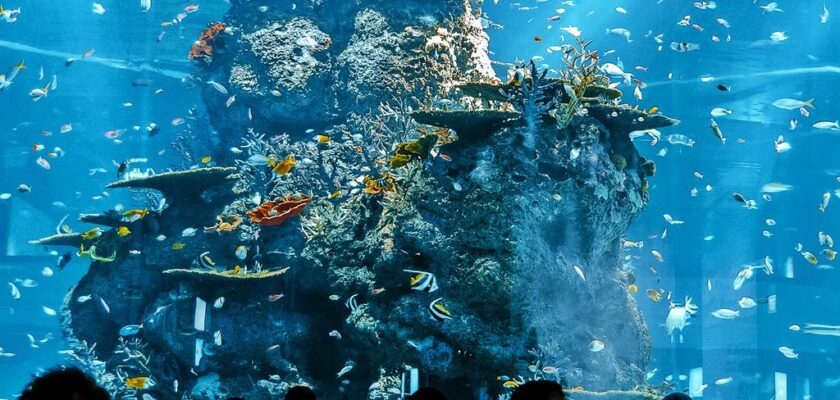Singapore Oceanarium (Marine Life Park)
Singapore Oceanarium is the largest oceanarium in Asia and one of Singapore’s main attractions. The oceanarium first opened in 1991 and was completely restored and rebuilt in late 2009 and early 2010.
Here you can see about 2,500 sea creatures, which represent about 250 different species. Among them there are even 7 species of unique fossil fish, which are found almost nowhere else.
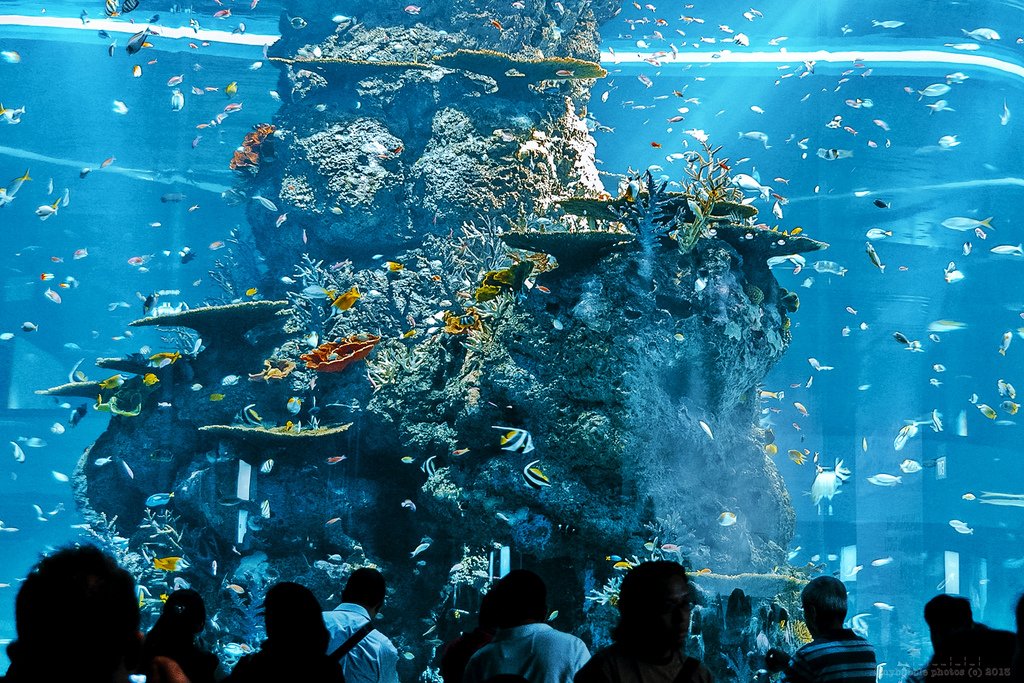
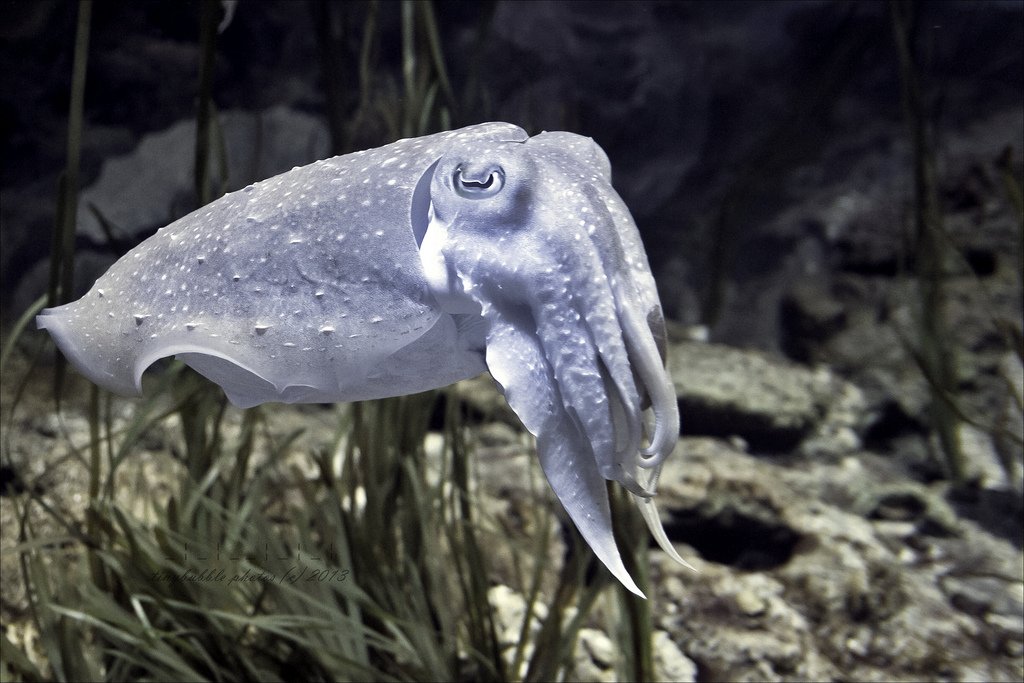
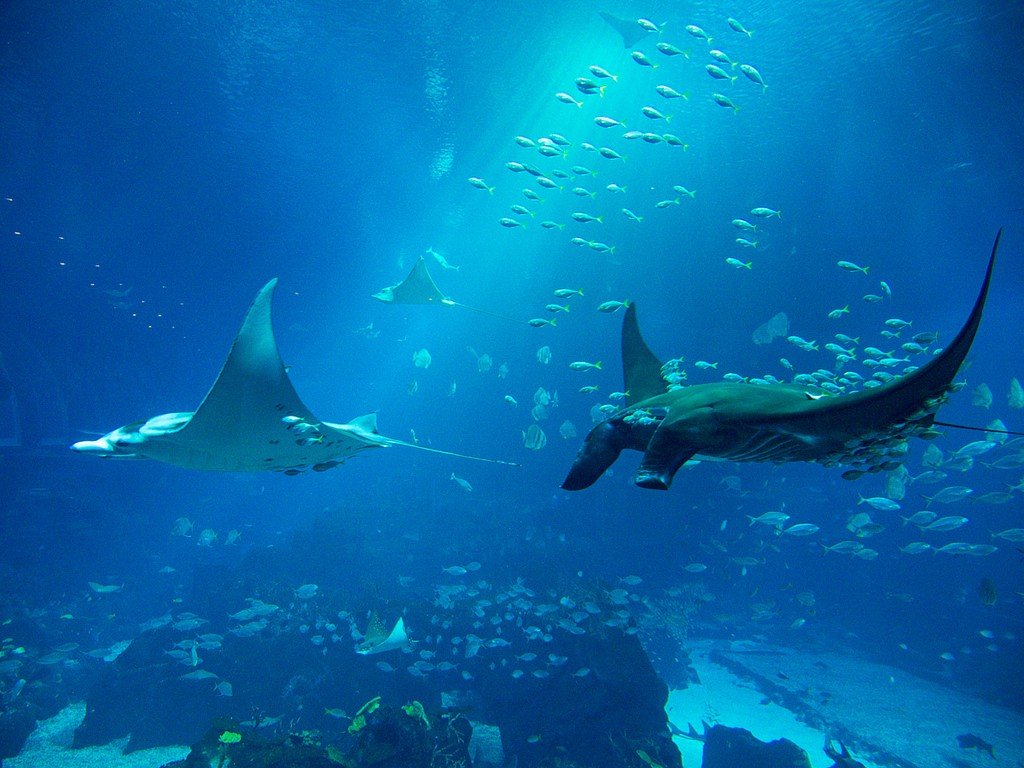
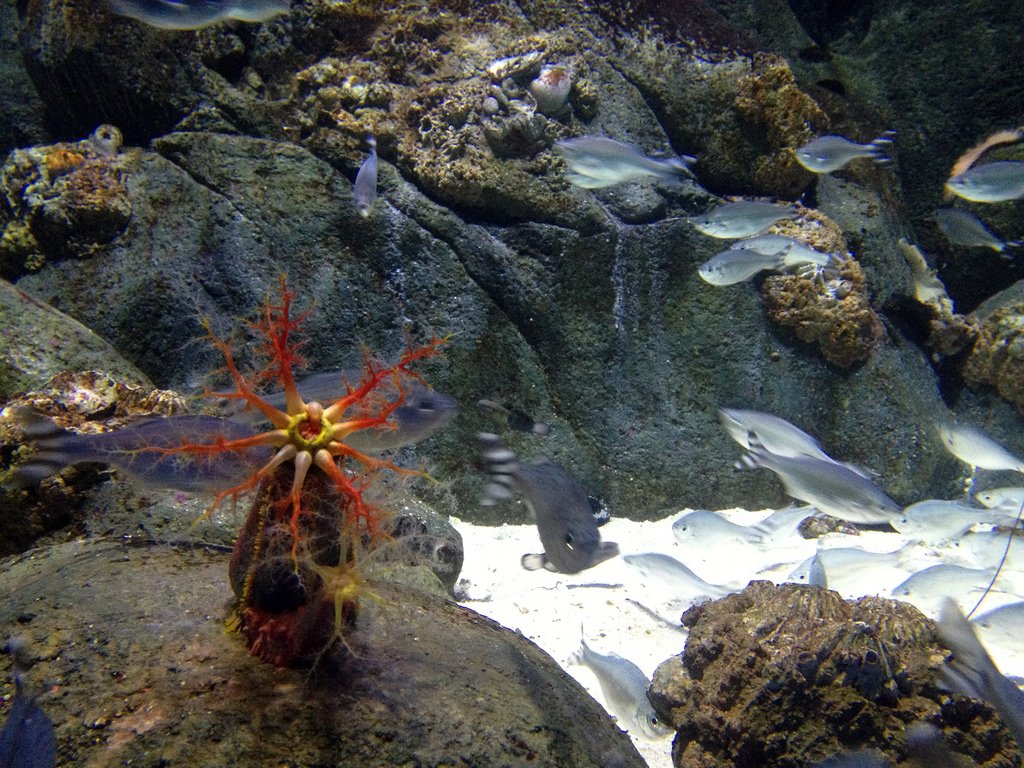
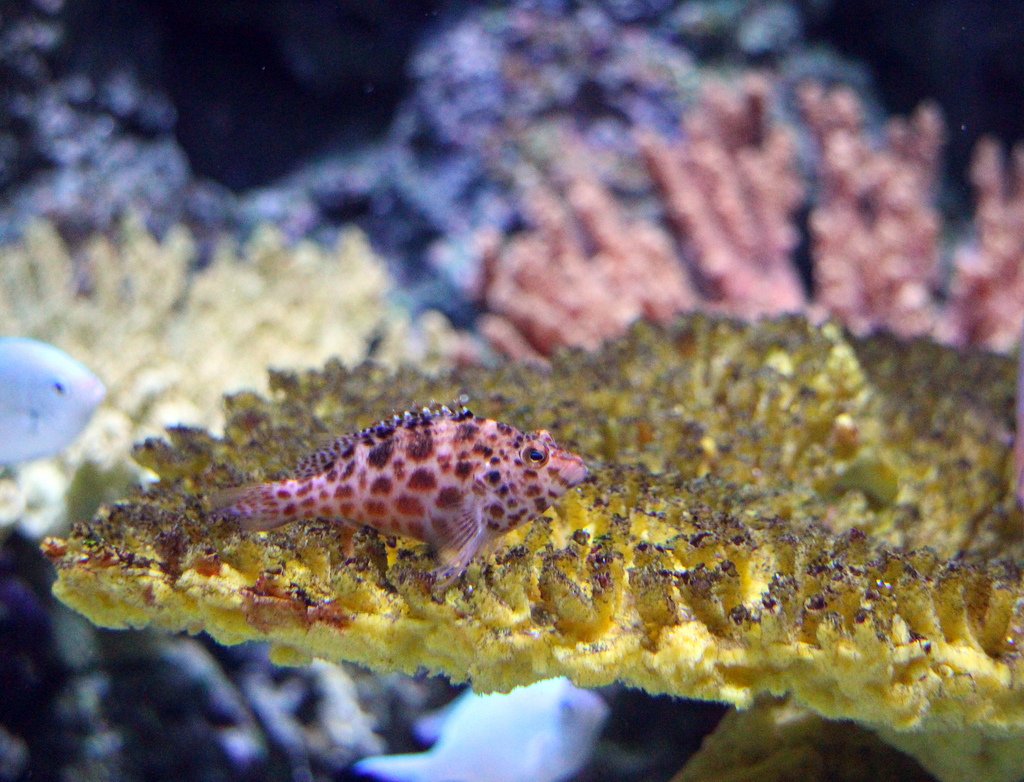
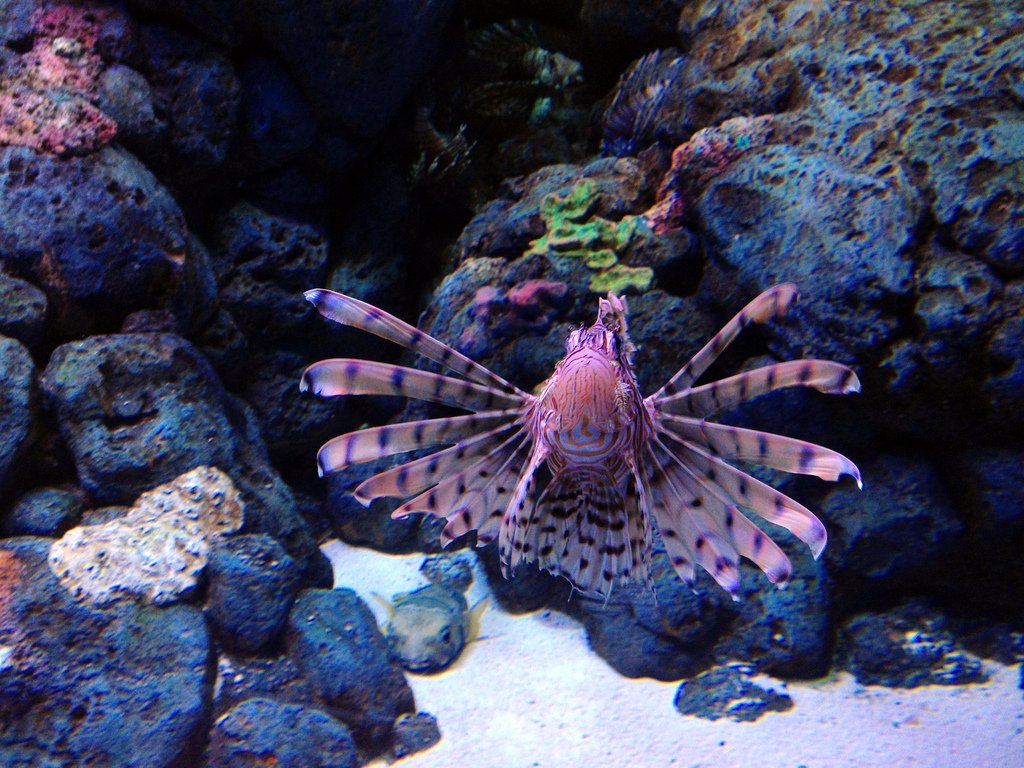
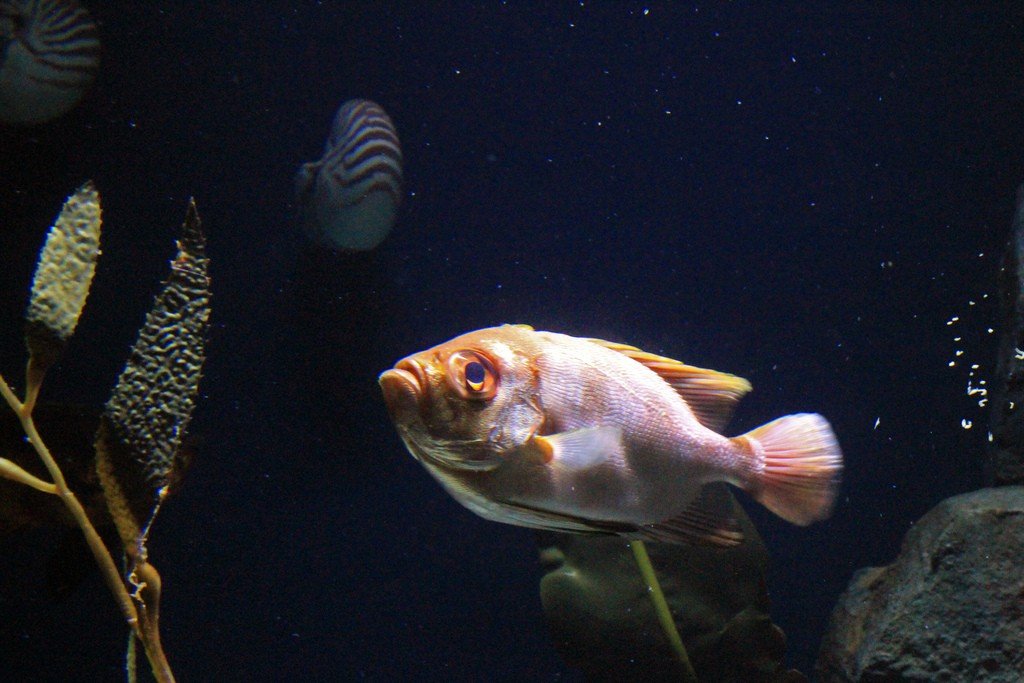
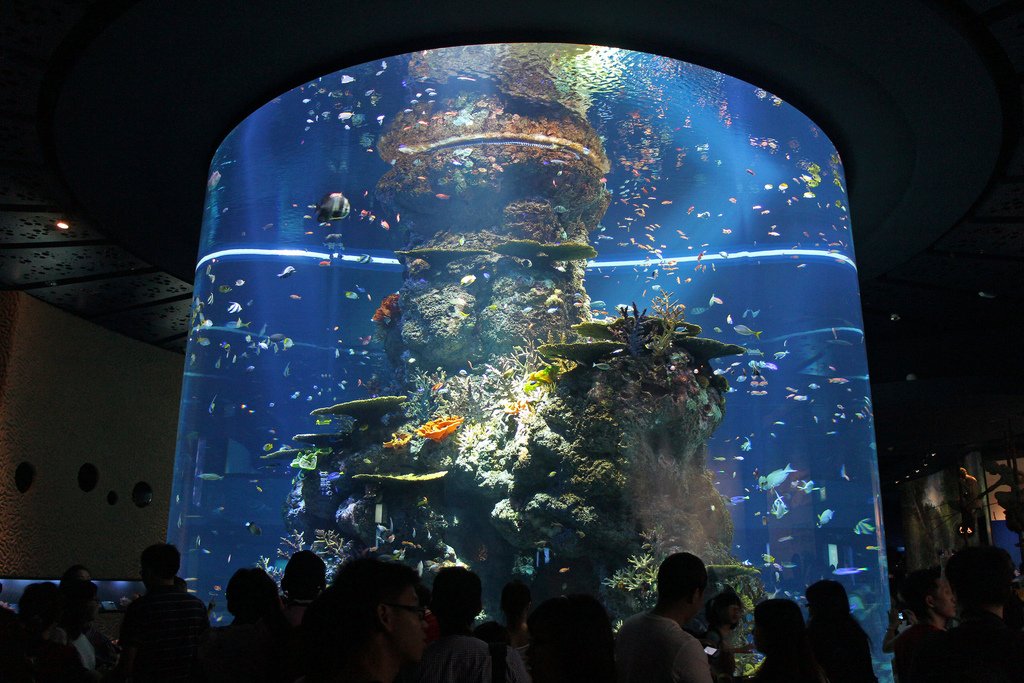
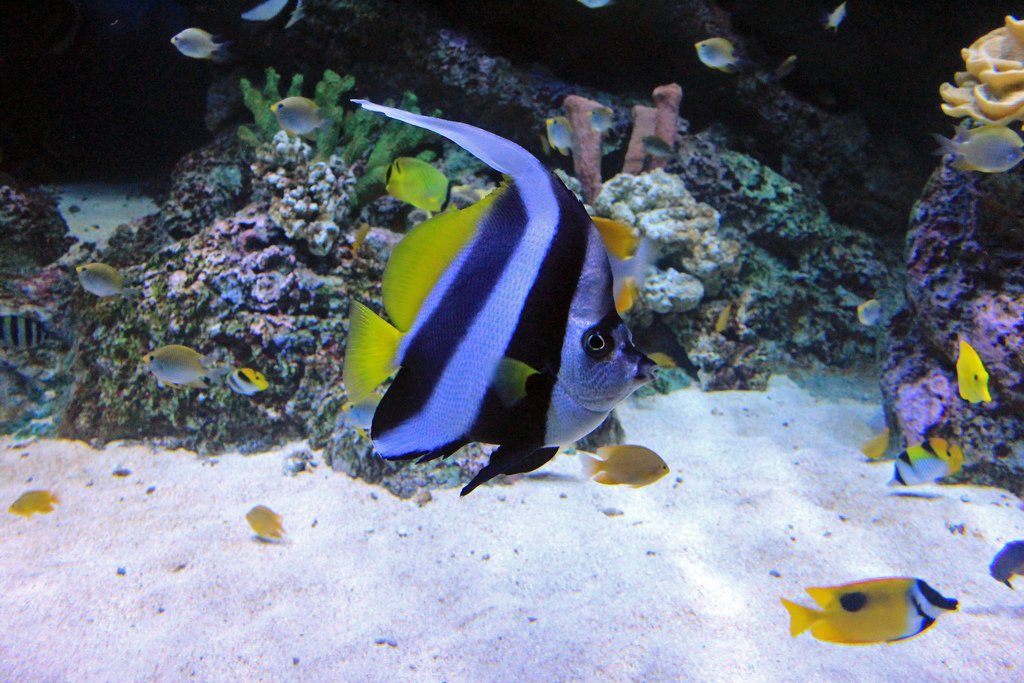
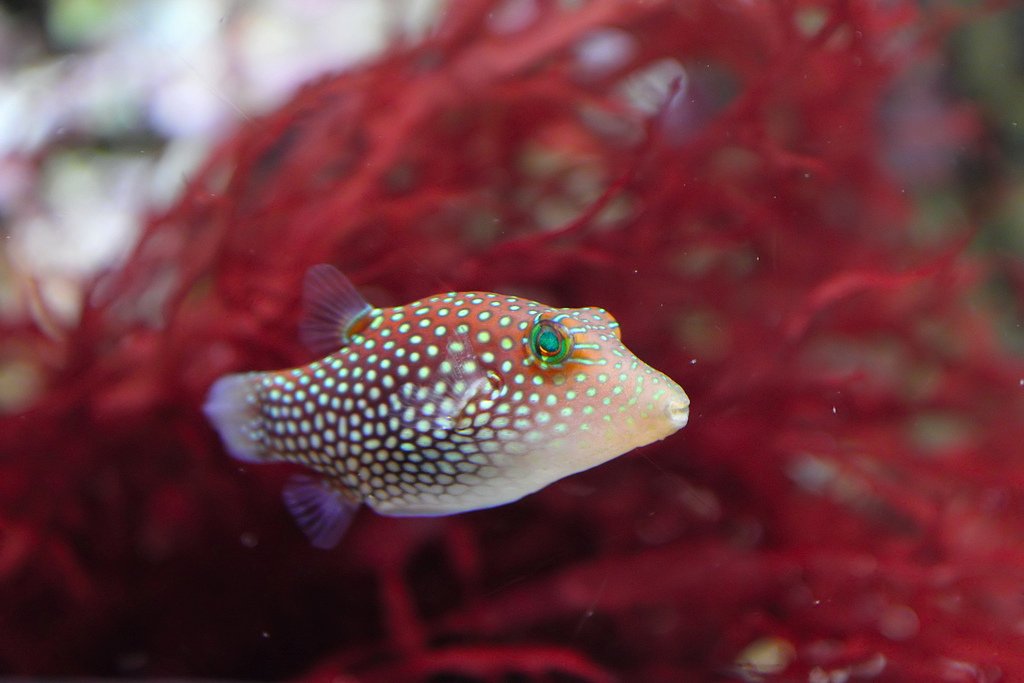
Video: Singapore Oceanarium
History
The idea of an oceanarium was proposed back in 1978, when the operators of Ocean Park in Hong Kong, proposed to the Singapore government to build a place where visitors could observe marine animals in their natural habitat. The government was not receptive to the idea, and it was only in the early 1980s that Sentosa Development Corporation (SDC), as part of a project to attract more visitors to Sentosa Island, became interested in the proposal. At the time, the only similar attraction in Singapore was the small Van Cleef Aquarium. In August 1983, SDC decided to build an oceanarium on a 3 hectare plot of land on Sentosa Island. Subsequently, the Singapore government formed a joint venture with Underwater World International (UWI), a subsidiary of Western Australia Development Corporation and New Zealand-based Marinescape to build and operate the new attraction.
.
The construction process took two years and the estimate was about S$20 million. The oceanarium was immediately appreciated by Singaporeans and tourists. It attracted over 200,000 visitors within a month of its opening on May 13, 1991, and welcomed its one millionth visitor in 1992. The opening of the Sentosa Island Oceanarium caused a significant drop in visitor traffic to the Van Cleef Aquarium, and it closed by the end of May 1991. In 1992, three Singaporean real estate developers Leslie Tan Hwee Lee, Jerry Tan Hwee Lee and Tan Hwee Chee bought the oceanarium for $25 million.
Dolphin Lagoon, another attraction at the Singapore Oceanarium, was first launched in 1999 and was originally located a short walk from the beach on Palawan Island (then called Central Beach). After the lease at Palawan Beach expired in 2009, a new lagoon was built next to the oceanarium. The project cost S$10.5 million and was opened on July 2, 2010.
In addition to being a showcase for marine life, the oceanarium also conducts scientific, educational and conservation activities. Shortly before the oceanarium opened, one of the leopard sharks living here laid its first batch of eggs. In 1992, the first offspring of stingrays were born. Pink dolphins pleased with the appearance of a baby dolphin in 2002, and in 2008 another dolphin born in captivity appeared. In 2009, a shark nursery was put into operation to breed bamboo and leopard sharks. Underwater World Singapore funded a coral rescue project in 1997, which involved transplanting some coral species from nearby Seringat Pulau Island to the Sentosa Island area. In 2004, the oceanarium collaborated with the World Wildlife Fund to conserve corals and endangered seahorses..What to see
Upon entering the oceanarium, visitors can see a huge ship suspended from the ceiling, as well as dozens of smaller ships. There, nearby, is the first curiosity – several open-air pools containing various fish and invertebrates. These are so-called “touch pools” (from English “touch pool” – literally “sesor pool”) – the animals that live here, you can not only feed, but also touch with your hands. Small sharks swim in one of the pools, and there are starfish at the bottom. Another pool is called “Ray of Fun” – a body of water that has become home to stingrays. The animals are well aware that visitors feed them and gladly swim to the edge of the pool. Nearby is an exposition aquarium (bottom right in the photo), in which shark eggs at various stages of embryonic development are placed and visitors can watch the process of embryo formation in “real time”. Based on this fact, it can be assumed that sharks and rays feel good in the conditions of the oceanarium and regularly reproduce.
.
Another feature of the oceanarium in Singapore is that it has several aquariums with special “feeding” pockets. By sticking your hand into such a pocket, visitors can feed the fish living in them. Specialized food can be purchased nearby from an employee of the aquarium. Note that the pockets are located at a level convenient for children, but not for adults! And this certainly indicates the target audience of the oceanarium.
.Some of the aquariums are designed in the form of portholes, which creates the effect of immersion in the underwater world. Special lighting generates moving glare on the walls of the aquariums, which gives naturalness to the observed picture. Each aquarium with underwater inhabitants is provided with a detailed sign in several languages, which provides detailed information about the animals contained here, their habitats and biology.
.
The centerpiece of the Singapore Oceanarium is a huge cylindrical aquarium that runs through two floors. The aquarium is glued together from acrylic panels and additionally strapped with steel rings to give it maximum strength, which is not surprising – the water pressure on the walls of the aquarium at this height reaches very high values.
>
Feeding the fish in this aquarium by scuba divers, attracts the attention of both visitors and the fish themselves. As a result, everyone is satisfied. Since the feeding is quite frequent, the lower part of the aquarium looks sparsely populated, with all the fish congregating on top waiting to be fed. The aquarium is home to a variety of fish from the reefs of the Indian and Pacific Oceans.
.
Several of the aquarium’s tanks are set aside to house jellyfish. With their outward simplicity, jellyfish are very spectacular sea creatures. Being one of the oldest animals on our planet, they mesmerize with their graceful rhythmic movements and translucent body, suggesting the idea of alien creatures.
.
The main attraction of the Singapore Oceanarium is an 83-meter underwater tunnel running along the bottom of a huge pool with a capacity of more than 3 million liters. It is made of 6 centimeters thick acrylic panels. Moving along the moving walkway, visitors have the opportunity to get a close-up view of the oceanarium’s marine life and the divers who feed them. Sharks, rays, and groupers from the coastal waters of Indonesia, the Maldives archipelago, and the South China Sea live here. Most of the animals were obtained from fish farms in Malaysia, Thailand, the Philippines, . As part of its interactive entertainment program, the Singapore Oceanarium has implemented a unique integration of modern technology with biology. As a result of this project, it is now possible to observe underwater creatures using a radio frequency identification system. The oceanarium is home to one of the last 7 species of fossil fish that have special RFID transmitters implanted under their skin, allowing them to transmit information about the fish through a computer terminal to visitors. RFID tags are very similar in function to bar codes, the most widely used today for labeling goods in stores, and they encode information about a particular animal – a kind of biometric passport. . Undoubtedly, one of the attractions of the oceanarium is a very small aquarium in which live two species of fish related to seahorses of the genus Hippocampus – ragfish Phycodurus eques and sea dragon Phyllopteryx taeniolatus. Both species are unique in their genera. The body length of the ragfish reaches 35 cm, and the sea dragon is larger – up to 46 cm. These fish are notable for the fact that their entire body and head are covered with outgrowths similar to algae layers. Although these outgrowths and similar to fins, they do not participate in swimming, and serve for camouflage. Both the ragfish and the sea dragon move with the help of pectoral and dorsal fins, which are almost transparent. Both species are endemic to the waters around southern, southeastern and southwestern Australia and northern and eastern Tasmania. They are rare and threatened with extinction due to habitat destruction. . A variety of interesting marine animals such as seahorses, crabs or colorful exotic fish live in individual small aquariums. Due to the small size of the aquariums, which are set at a height that is comfortable for both children and adults, they can be viewed up close, which would be difficult to do in a large aquarium. . Of interest are large aquariums with reef inhabitants – colorful tropical fish and corals. Here you can see angel fish, surgeon fish, butterfly fish, rhinoceros fish, guban and so on. Corals are mainly represented by the gorgonian coral Plexauridae. Throughout the oceanarium there are demonstration stands, which tell about the anatomy, biology and ecology of the inhabitants of the World Ocean. So stands with jaw apparatuses of sharks clearly demonstrate the differences in the jaws of different species of sharks – mako shark, common sandbar shark, bluntnose shark, which are predators (pictured above left) and Australian guitarfish Rhinobatos typus. The latter’s jaws are perfectly adapted to crushing the tough clam shells and crab shells it feeds on. The address of the Singapore Underwater World Oceanarium is 80 Siloso Road, Sentosa, Singapore 098969, tel (65) 6275 0030 , fax (65) 6275 0036 Opening hours of the Singapore Underwater World Oceanarium:Daily 9:00 am – 8:30 pmUseful information
Opening hours
Dolphin Lagoon opening hours:Daily c 10:30 am – 5:30 pm
Fish Reflexology Hours of Operation:Daily, 10:00 a.m. – 7:00 p.m. (admission ends at 6:15 p.m.)
Cost of admission tickets
Singapore Underwater World and Dolphin Lagoon Oceanarium:23 Sing. $ – adults, 15 Sing$ – children (3-12 years old), children under 3 years old are free.
.Fish Reflexology:38 sing.$. for a 40-minute session52 Sng.$. for a 50-min. session
.Duration of the Singapore Underwater World and Dolphin Lagoon Oceanarium tour: 1.5 hrs.
.How to get to Singapore Underwater World
From Harbourfront Bus Station, take a shuttle bus to Sentosa or from Vivo City take the Express to the island, then get off at Beach Station. Then take a Blue Line bus and get off at the Underwater World stop.
How to get to Dolphin Lagoon
To Sentosa Island, take a shuttle bus from Harbourfront Bus Station or express from Vivo City, get off at Beach Station. Change to a Yellow Line bus and get off at the Dolphin Lagoon stop.
